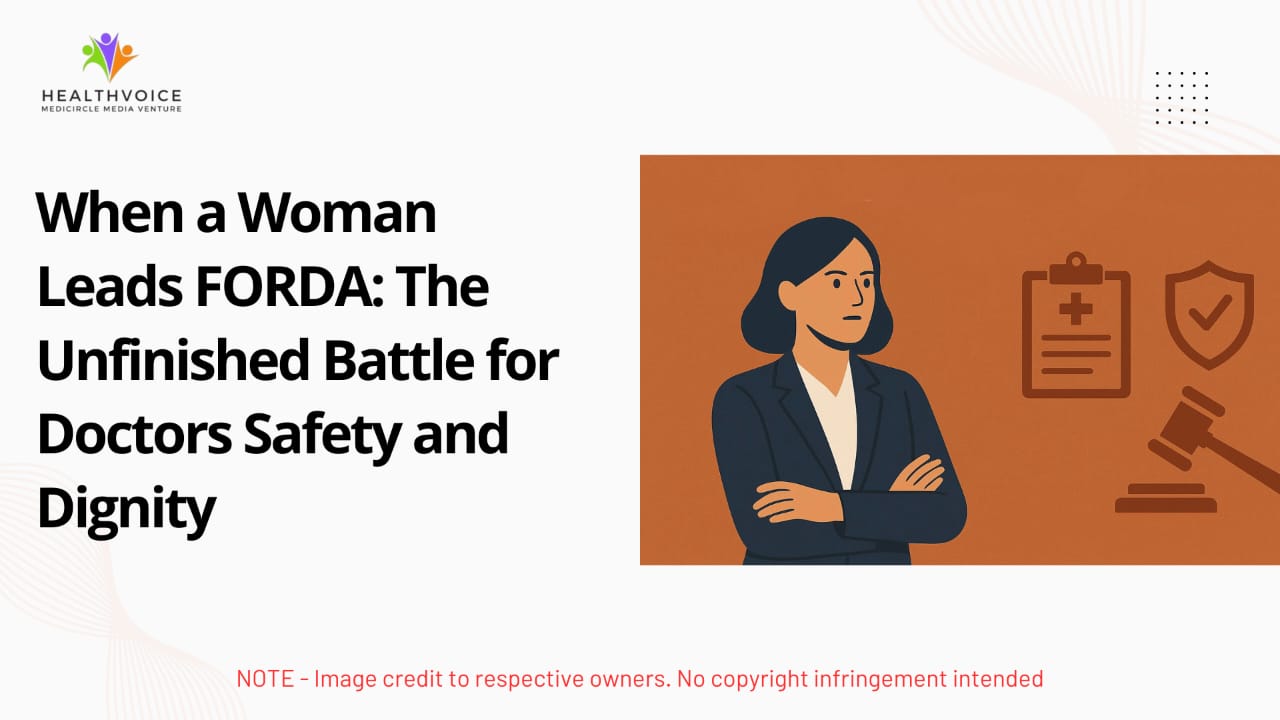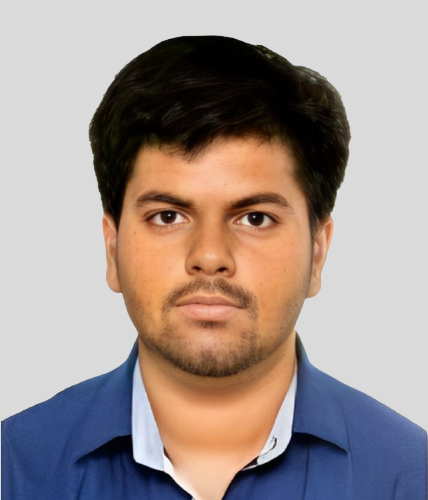When a Woman Leads FORDA: The Unfinished Battle for Doctors Safety and Dignity
For countless young women in medicine, her election is an affirmation that leadership is not a closed door.

In the crowded corridors of Safdarjung Hospital, where the sounds of urgency rarely fade, history has been scripted. Dr Devaunshi Kaul, a young resident doctor, has taken charge as the president of the Federation of Resident Doctors Association (FORDA), becoming the first woman in India to lead a national-level resident doctors body. Her election is a symbolic moment in Indian healthcare, where gender, power, and patient safety converge in complex ways.
Leadership in medical associations has traditionally been dominated by men. Networks, opportunities, and unwritten rules have long made the climb easier for male doctors, while women despite their numbers in the workforce rarely find themselves at the decision-making table. Dr Kaul’s rise is therefore a moment of disruption. She openly acknowledges that women often face an uphill struggle in leadership roles, not because they lack skill or competence, but because the system seldom leads a smooth path for them. Her journey, from being the first woman president of Safdarjung’s Resident Doctors Association to now heading FORDA, is a reminder that barriers can be broken when courage meets opportunity.
For Dr Kaul, leadership is not about aggression or loud voices; she describes her style as balanced, empathetic, and rooted in negotiation. In her view, these qualities are not weaknesses but strengths especially in an association constantly mediating between doctors, hospital administrations, and government authorities. She believes women bring a distinctive lens to leadership that values listening as much as asserting, and that balance, she says, is exactly what India’s medical associations need at this moment of crisis.
The crises are many, and at the top of her agenda is safety. The memory of violent attacks on doctors, including the widely reported RG Kar Hospital incident in Kolkata, continues to haunt the medical fraternity. While such events sparked outrage and brief attention, the reality is that attacks have not stopped. What troubles Dr Kaul most is not only the violence itself but the silence that follows. Action against perpetrators is often delayed, diluted, or dismissed, leaving doctors to work under the constant shadow of fear. She insists that India cannot treat healthcare workplace violence as isolated episodes. What is needed is a strong national law, embedded in Health Ministry protocols, that guarantees protection for doctors the way security frameworks exist in other professions. Without such a law, safety remains dependent on individual hospitals, many of which lack the resources or the will to prioritize security.
For women doctors, the risk multiplies after sunset. Dr Kaul speaks of poorly lit corridors, absence of guards, and lack of surveillance in tier-two and peripheral hospitals, where residents often find themselves vulnerable during night duties. A woman doctor walking alone through a dimly lit ward at midnight should not have to carry fear along with her stethoscope. In metro hospitals, the presence of guards and CCTV cameras has made some difference, but for thousands of doctors posted in smaller centers, conditions remain unsafe. Her frustration is evident when she notes that the issue is raised year after year but rarely acted upon with urgency. Sometimes, she admits, negotiation feels insufficient, and stronger, more aggressive demands may be necessary.
If safety is one pillar of her leadership agenda, working hours is another. The Supreme Court’s intervention and the National Medical Commission’s directive capping weekly hours at 48 may look promising on paper, but the reality on the ground tells another story. Residents, especially in surgical branches, continue to work 24 to 48 hours without rest. The explanation is simple, the system does not have enough doctors. When a resident’s shift ends, there is often no one to take over, leaving them with no choice but to stay on. Reforms without manpower, Dr Kaul argues, are empty promises. Unless the government expands postgraduate seats, hires more junior residents, and appoints ad-hoc doctors to fill the gaps, guidelines will remain aspirational. For the young men and women enduring sleepless nights, the reform must come not in the form of memos but in the form of colleagues.
The exhaustion is compounded by the disillusionment that comes after training. Senior residents, who should ideally be stepping into faculty positions, are increasingly leaving the government system. The reasons are recruitment is irregular, contracts are short-term, and pay is meager, sometimes even less than what a senior resident earns. Corporate hospitals, with higher salaries and more predictable working conditions, become the inevitable destination. A career in government service, once considered prestigious and stable, is no longer a viable option for many. Out of a batch of 100 senior residents completing their term, only a handful are absorbed back into the institute as faculty. This brain drain from government hospitals to private chains is not a matter of personal choice alone; it is a structural failure that weakens the very backbone of public healthcare.
Government hospitals, already stretched with overcrowding and underfunding, are left even more understaffed. The cycle is vicious: fewer doctors mean longer working hours for those who remain, leading to burnout, frustration, and eventually more exits. Patients, meanwhile, face longer waiting times, compromised attention, and a system straining at its seams. For a country that prides itself on producing some of the finest doctors in the world, the inability to retain them in the public system is a tragedy with far-reaching consequences.
Dr Kaul’s election comes at a time when Indian healthcare stands at this uneasy point. On one hand, there is undeniable progress with more medical colleges, greater awareness, and a stronger presence of India on the global healthcare map. On the other, the basic working conditions of resident doctors remain fraught with challenges that sap morale and threaten the quality of care. Safety, working hours, recruitment, and fair pay are not luxuries; they are fundamental requirements to sustain the medical workforce that forms the frontline of healthcare.
Her presidency of FORDA is therefore more than a ceremonial milestone. It represents the voice of thousands of resident doctors who keep India’s hospitals running, often unseen and uncelebrated. It is a reminder that healthcare reform cannot be measured by infrastructure alone; it must also address the lived realities of those who provide care. Policies that look good on paper mean little if the young doctor applying them is too exhausted, too unsafe, or too underpaid to continue.
There is also a symbolic power in her being the first woman to hold this position. For countless young women in medicine, her election is an affirmation that leadership is not a closed door. It is a message that empathy, balance, and persistence are as valuable in leadership as aggression and assertiveness. At a time when women doctors still struggle with gender bias, unequal opportunities, and higher risks during night shifts, her rise is both a victory and a call to action.
Her task is not easy, but history often remembers those who carry the weight of impossible battles. In her story lies a deeper truth about Indian healthcare that behind the statistics of beds and budgets are human beings who fight every day to heal, often at great personal cost. If the country wishes to truly honor its doctors, it must listen to the voices rising from within, voices like hers that refuse to stay silent.
The corridors of Safdarjung, like many government hospitals in India, will continue to echo with urgency. Patients will keep arriving, sometimes by the hundreds, seeking help from exhausted yet determined residents. Doctors will continue to fight through fatigue, fear, and frustration, holding on to the belief that their work matters. And among them will be leaders like Dr Devaunshi Kaul, who carry the responsibility of turning these daily struggles into a collective movement for dignity, fairness, and safety.
Her presidency is a beginning, not an end. The question is whether the system will respond to her voice with the urgency it demands or continue to push reform into the endless waiting rooms of bureaucracy. The answer will shape not just the future of resident doctors but the future of healthcare in India.
 Sunny Parayan
Sunny Parayan
#healthvoice #WomenInLeadership #FORDA #HealthcareReform #ResidentDoctors #MedicalLeadership #DoctorSafety #HealthcareWorkers #GenderEquality #DoctorsVoice #IndianHealthcare #MedicalReform #WorkplaceSafety #DoctorLife #HealthcareForAll
